

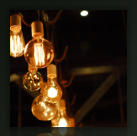

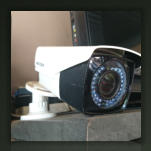
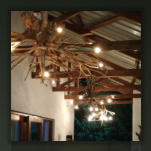
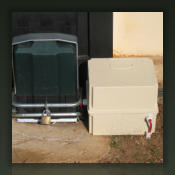
For all your ELECTRICAL needs in the Pretoria region


© Copyright - Louis Calitz Electrical

Lightning
Protection
Earthmats
Earthmats are the foundation of proper lightning protection. Without Earthmats you might as well dump the lightning arrestors in the bin. We manufacture and install quality Earthmats to specification. We'll design a specific earth solution for you.Facts About Lightning
Lightning & Lightning Protection Systems Facts: Lightning... Packs between 35,000 to 40,000 amperes of current. Can generate temperatures as high as 50,000 degrees Celsius. Falls somewhere on the earth every second. Travels as far as 65 kilometres. Kills nearly 40 people each year in the RSA and injures hundreds of others. Can, and does strike the same place twice. Causes millions of Rand in property damage each year, many times resulting in fire and total property loss.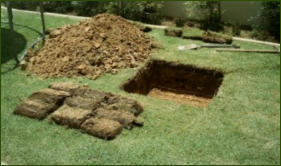
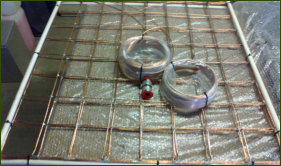
Residential Lightning Protection
Systems
More and more home-owners are becoming aware of the need to protect their families, homes and property from a lightning strike. Every year thousands of homes and properties are destroyed or damaged by lightning. Unprotected homes risk the possibility of damage by fire, explosions or powerful electrical surges. Personal injury can often occur in an unprotected home which has been struck by lightning. The effects of a strike can be both emotionally and physically devastating. In addition to protecting your life and most valuable possessions, a lightning protection system can give you peace of mind. Contemporary residential lightning protection systems are found on thousands of homes and are inconspicuous in design. Many systems are installed during the construction phase of a new home, while others can be easily installed on an existing home.
A lightning protection system is designed to
control or redirect a lightning strike on a
specified path. The system does not prevent a
strike, but provides a safe path on which the
electrical current can safely be directed to
ground. Most importantly, a lightning
protection system will not attract a bolt of
lightning.
When considering lightning protection for
your home, we suggests contacting us as
lightning specialists.
More and more home-owners are becoming
aware of the need to protect their families,
homes and property from a lightning strike.
Every year thousands of homes and
properties are destroyed or damaged by
lightning. Unprotected homes risk the
possibility of damage by fire, explosions or
powerful electrical surges. Personal injury can
often occur in an unprotected home which
has been struck by lightning. The effects of a
strike can be both emotionally and physically
devastating.
In addition to protecting your life and most
valuable possessions, a lightning protection
system can give you peace of mind.

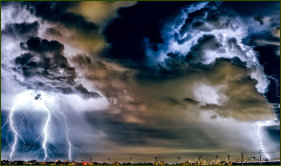
How does lightning form?
Lightning, a flow of electrical current between the earth and storm clouds, occurs as varying charges of positive and negative polarity build up in the atmosphere during a storm. The result is a discharge or current sent rushing toward the earth. As this downward force nears the earth's surface, positive charges rise up to meet it. As the negatively charged stepped leader thrusts toward the ground readying to discharge its energy, its path is erratic. Nearing the earth, positive charges are attracted by it and strain up from roof edges, lighting poles, antennas, etc. When the two opposing charge systems meet, they create a closed circuit. As the path to the ground is completed, a flash is created.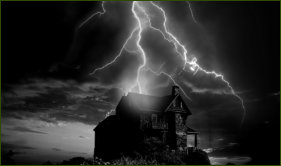
What happens when a building is
struck by lightning?
A lightning strike to an unprotected building can be catastrophic. Packing up to 100 million volts of electricity and a force comparable to that of a small nuclear reactor, lightning has the power to rip through roofs, explode walls of brick and concrete and ignite deadly fires. In addition to structural damage, lightning surges throughout power lines causing wire damage and destruction of valuable electronic equipment including computers, televisions, stereos, security systems, etc.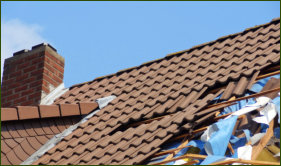
How does a certified lightning
protection system work?
A lightning protection system provides a designated path for the lightning current to travel. The system neither attracts nor repels a lightning strike, but simply intercepts and guides the current harmlessly to ground. A lightning protection system is made up of several components. Air Terminals: (a.k.a. lightning rods): Inconspicuous slender rods installed on the roof at regular intervals as defined by industry standards. Conductors: Aluminium or copper cables that interconnect the air terminals and the other system components. Ground Terminations: Metal rods driven into the earth to guide the lightning current harmlessly to ground. Surge Arrestors and Suppressors: Devices that are installed in conjunction with a lightning protection system to protect electrical wiring and electronic systems and equipment.




For all your ELECTRICAL needs in the Pretoria region


© Copyright - Louis Calitz Electrical
Lightning
Protection
Earthmats
Earthmats are the foundation of proper lightning protection. Without Earthmats you might as well dump the lightning arrestors in the bin. We manufacture and install quality Earthmats to specification. We'll design a specific earth solution for you.Facts About Lightning
Lightning & Lightning Protection Systems Facts: Lightning... Packs between 35,000 to 40,000 amperes of current. Can generate temperatures as high as 50,000 degrees Celsius. Falls somewhere on the earth every second. Travels as far as 65 kilometres. Kills nearly 40 people each year in the RSA and injures hundreds of others. Can, and does strike the same place twice. Causes millions of Rand in property damage each year, many times resulting in fire and total property loss.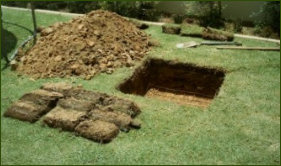

Residential Lightning Protection Systems
More and more home-owners are becoming aware of the need to protect their families, homes and property from a lightning strike. Every year thousands of homes and properties are destroyed or damaged by lightning. Unprotected homes risk the possibility of damage by fire, explosions or powerful electrical surges. Personal injury can often occur in an unprotected home which has been struck by lightning. The effects of a strike can be both emotionally and physically devastating. In addition to protecting your life and most valuable possessions, a lightning protection system can give you peace of mind. Contemporary residential lightning protection systems are found on thousands of homes and are inconspicuous in design. Many systems are installed during the construction phase of a new home, while others can be easily installed on an existing home.
A lightning protection system is designed to control
or redirect a lightning strike on a specified path. The
system does not prevent a strike, but provides a safe
path on which the electrical current can safely be
directed to ground. Most importantly, a lightning
protection system will not attract a bolt of lightning.
When considering lightning protection for your
home, we suggests contacting us as lightning
specialists.
More and more home-owners are becoming aware
of the need to protect their families, homes and
property from a lightning strike.
Every year thousands of homes and properties are
destroyed or damaged by lightning. Unprotected
homes risk the possibility of damage by fire,
explosions or powerful electrical surges. Personal
injury can often occur in an unprotected home
which has been struck by lightning. The effects of a
strike can be both emotionally and physically
devastating.
In addition to protecting your life and most valuable
possessions, a lightning protection system can give
you peace of mind.


How does lightning form?
Lightning, a flow of electrical current between the earth and storm clouds, occurs as varying charges of positive and negative polarity build up in the atmosphere during a storm. The result is a discharge or current sent rushing toward the earth. As this downward force nears the earth's surface, positive charges rise up to meet it. As the negatively charged stepped leader thrusts toward the ground readying to discharge its energy, its path is erratic. Nearing the earth, positive charges are attracted by it and strain up from roof edges, lighting poles, antennas, etc. When the two opposing charge systems meet, they create a closed circuit. As the path to the ground is completed, a flash is created.
What happens when a building is struck
by lightning?
A lightning strike to an unprotected building can be catastrophic. Packing up to 100 million volts of electricity and a force comparable to that of a small nuclear reactor, lightning has the power to rip through roofs, explode walls of brick and concrete and ignite deadly fires. In addition to structural damage, lightning surges throughout power lines causing wire damage and destruction of valuable electronic equipment including computers, televisions, stereos, security systems, etc.
How does a certified lightning protection
system work?
A lightning protection system provides a designated path for the lightning current to travel. The system neither attracts nor repels a lightning strike, but simply intercepts and guides the current harmlessly to ground. A lightning protection system is made up of several components. Air Terminals: (a.k.a. lightning rods): Inconspicuous slender rods installed on the roof at regular intervals as defined by industry standards. Conductors: Aluminium or copper cables that interconnect the air terminals and the other system components. Ground Terminations: Metal rods driven into the earth to guide the lightning current harmlessly to ground. Surge Arrestors and Suppressors: Devices that are installed in conjunction with a lightning protection system to protect electrical wiring and electronic systems and equipment.



















